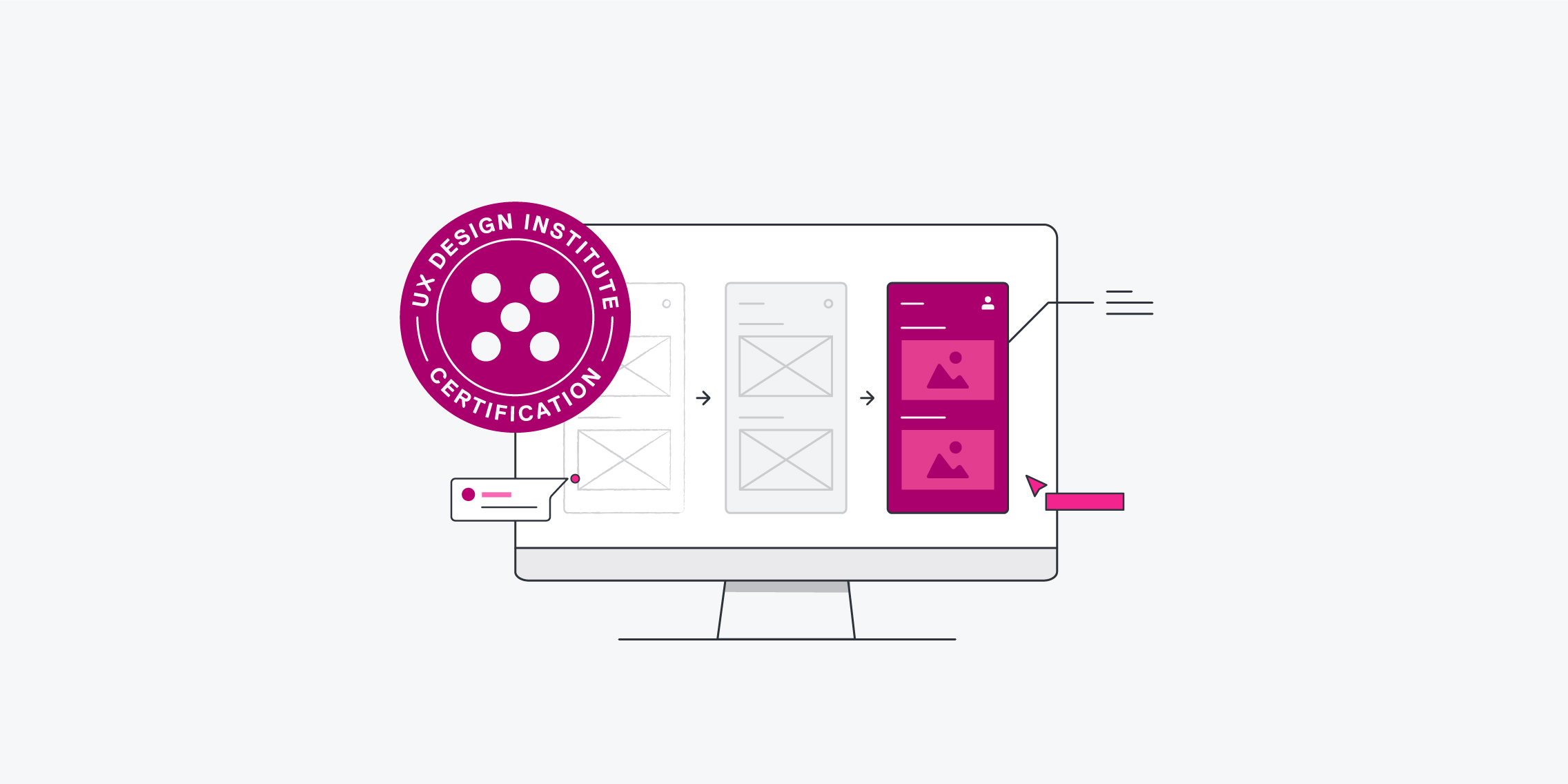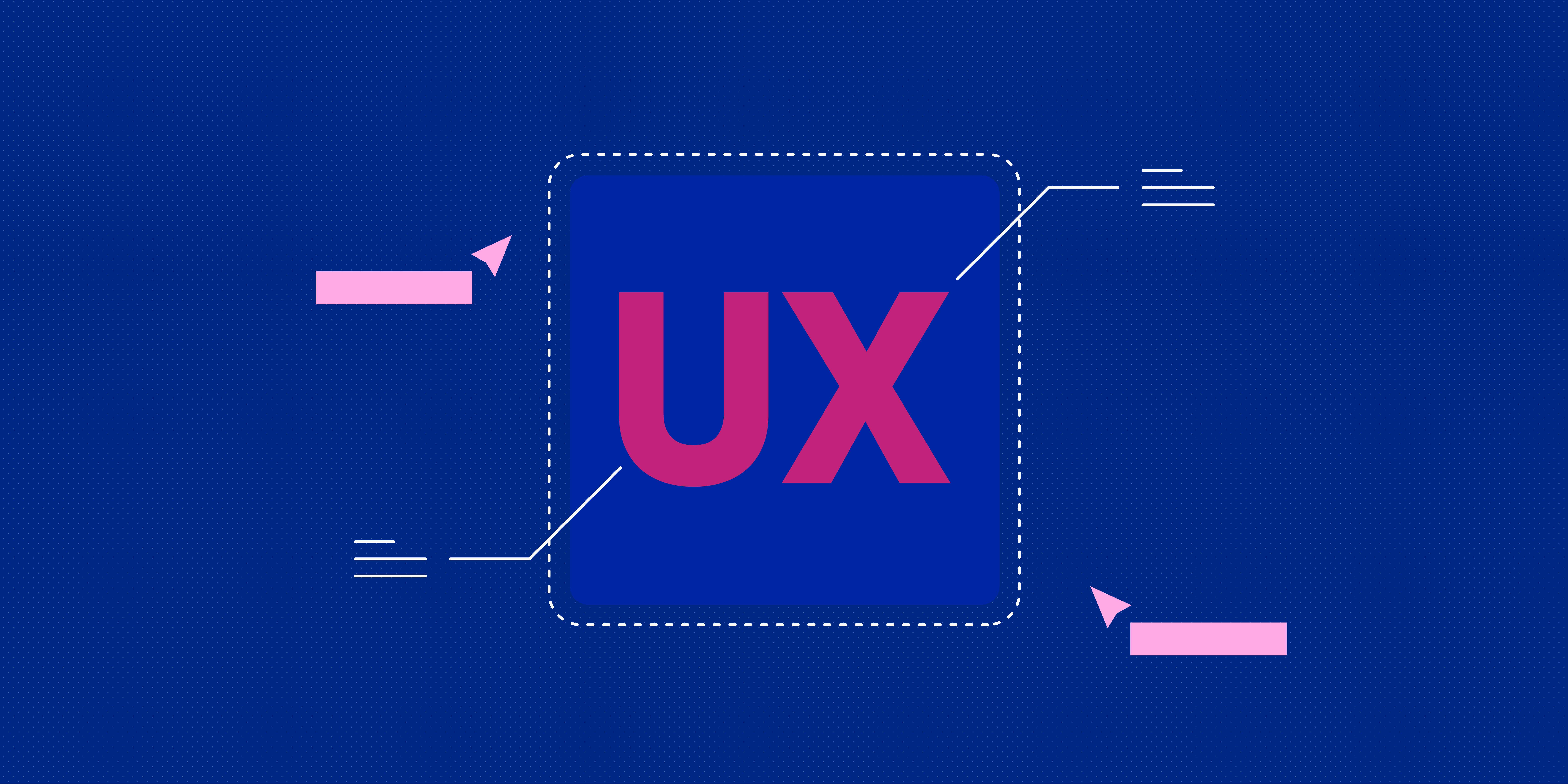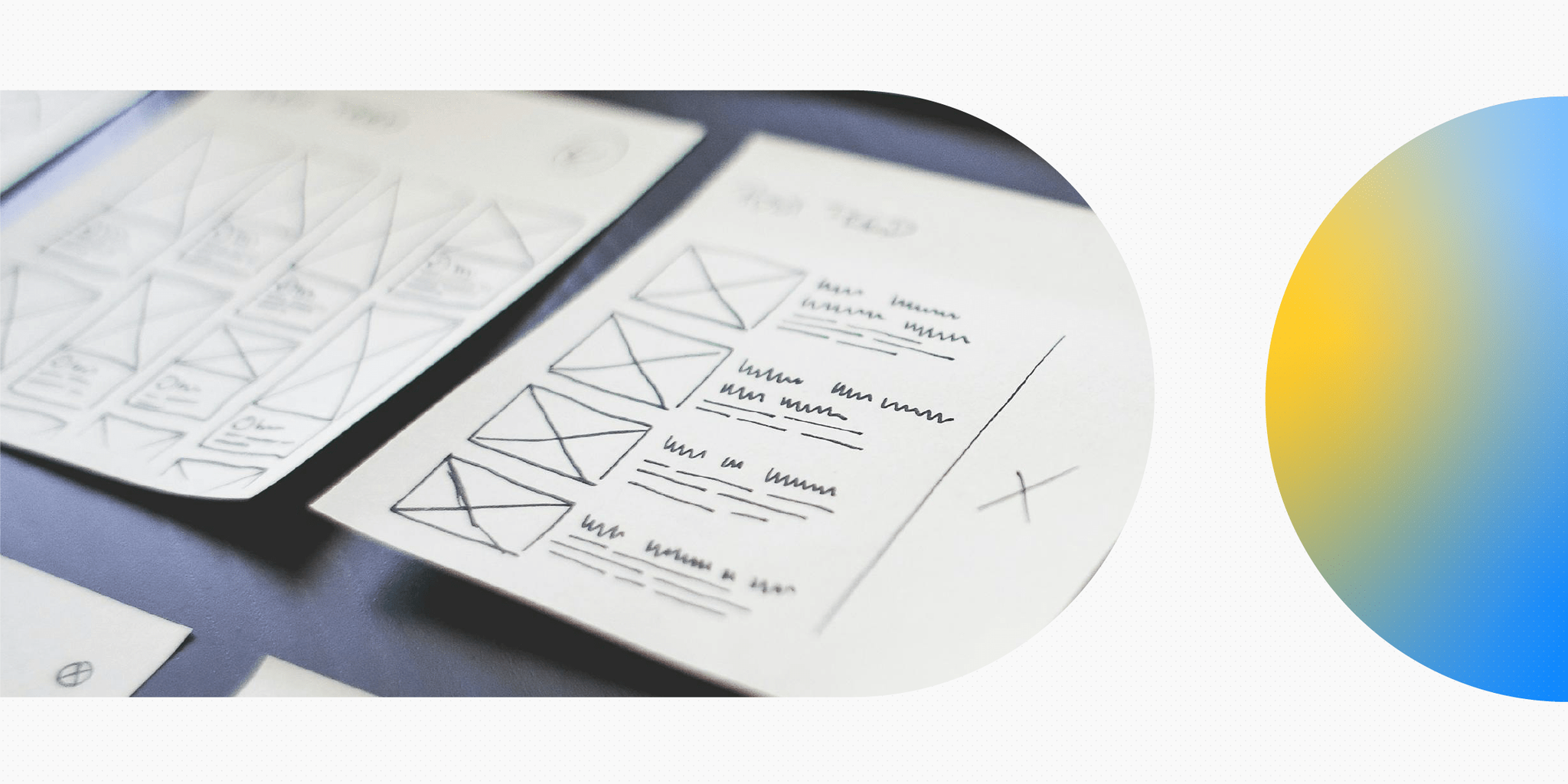If you want to break into the exciting field of UX, you’ve no doubt spent hours weighing up your options.
An expensive but thorough UX bootcamp? Or perhaps the more affordable (but presumably highly credible) Google UX Design Certificate? Or maybe you can just wing it with free UX courses…
If your end goal is to start a UX design career, we’d strongly advise you to consider a fourth option: a university credit-rated UX design diploma.
Before you invest your hard-earned money and precious time, you’ll want to read this guide. In it, we shed some much-needed light on why UX bootcamps, free courses, the Google certificate, and similar options are not the solution to your long-awaited career change—despite plenty of powerful marketing and bold promises.
Here’s what’s in store:
- What do we mean by UX bootcamps and free UX courses?
- What about the Google UX Design Professional Certificate?
- Want to start a UX career? Why free courses, UX bootcamps, and Google’s UX Certificate are not the answer
- What’s the alternative? Consider a university credit-rated UX diploma
- Why choose a university credit-rated UX diploma over a UX bootcamp or a non credit-rated course?
- Your learning path will make all the difference. Choose wisely!
Let’s break it down.
What do we mean by UX bootcamps and free UX courses?
UX bootcamps and free UX courses: two extremely popular yet very different options for learning UX design.
What to expect from a UX bootcamp:
A UX bootcamp typically offers an intensive, accelerated program condensed into a short period of time. It might take two days, two weeks, or three months to complete; it all depends on the provider.
Traditionally, bootcamps were associated with in-person learning. And, while on-campus UX bootcamps still exist, online bootcamps are now just as common.
Bootcamps tend to have you learning as part of a cohort, and their main selling point is that they focus on practical skills.
Here’s an overview of some popular UX bootcamps:
| UX bootcamp | Price | Duration | Online? | On-campus? |
| Ironhack UX/UI Design Bootcamp | €6,500 – €8,000 | 9 weeks full-time, 24 weeks part-time | Yes | Yes, in London, Lisbon, Barcelona, Berlin, Madrid, Paris, São Paulo, Miami and Mexico City. |
| Thinkful UX/UI Design Bootcamp | Approx. €11,400 – €13,700 | 5 months full-time (50 hours/week) or 6 months part-time (25 hours/week) | Yes | No |
| Flatiron School UX/UI Product Design Bootcamp | Approx. €15,600 | 15 weeks full-time (40 hours/week) or 40 weeks part-time | Yes | Yes, in Denver and New York. |
As you can see, UX bootcamps often come with a hefty price tag and an intense study schedule. Then, at the other end of the scale, you’ve got free UX courses.
What to expect from a free UX course:
Free UX courses offer a short, high-level introduction to UX design (or specific UX-related topics, such as an introduction to wireframing or UX writing).
Some free courses are indeed completely free, like The UX Design Institute’s Introduction to UX Design which will cost you no more than your mobile number and email address.
Other courses are free in the sense that they’re included in the price of a monthly subscription to platforms like Udemy, Coursera, and Skillshare.
Free UX courses are brief, spanning mere hours or days, and you can expect to work through them independently at your own pace. The goal of a free course is to give you some insight into the topic and help you decide whether or not you want to pursue a paid program.
Here’s an overview of some popular free UX courses:
| Free UX course | Price | Duration | Format |
| UXDI Introduction to UX Design | Free | Approximately 45 minutes | 7 video lessons and 18 curated articles |
| General Assembly Intro to UX Design | Free | 2 hours | Online livestream |
| Codecademy Introduction to UI and UX Design | Free | 5 hours | Written lessons, projects, and quizzes |
What about the Google UX Design Professional Certificate?
Somewhere in between those intensive, expensive UX bootcamps and short-and-sweet free courses, you’ve got programs like Google’s UX Design Professional Certificate available via Coursera.
When it first launched back in March 2021, this new addition to the UX education market caused quite a stir. Created by one of the biggest names in tech, it had the instant advantage of recognition and credibility. It’s provided by Google so it must be good, right?
Then there’s the fact that it’s “free” (well, within the price of a Coursera subscription which will set you back $39/month, or around €36). It’s also pretty comprehensive, offering 7 courses in total and spanning 6 months at a pace of 10 hours per week.
All in all, that’s not a bad deal. But is it enough to launch a career in UX design?
The answer is no—and the same applies for UX bootcamps and free UX courses. If you’re curious as to why, keep reading.
Want to start a UX career? Why free courses, UX bootcamps, and the Google UX Certificate are not the answer
We’re not saying that UX bootcamps, free courses, and programs like the Google UX Design Certificate aren’t valuable resources for learning about UX design. It’s just that they’re not the best option if your goal is to actually start a career in the field and get hired into a UX role. Let’s explore why.
A free UX course will definitely not get you hired (but that’s ok…they don’t promise to)
Let’s start with free UX courses. These are designed to give you a taste of the topic and a surface-level insight into what a career in UX involves. They’re short, concise, and don’t go into any kind of depth—just what you’d expect from a quick, free resource.
You should start with free UX courses if you don’t know much about UX and want to dip a tentative toe in without any heavy time or financial investment.
Many UX bootcamps do guarantee that you’ll land a job…but they tend to over-promise and under-deliver
UX bootcamps certainly appear more promising. They’re intensive and full-on, they place great emphasis on practical skills, and they put you right in the midst of a cohort of fellow learners.
What’s more, many UX bootcamps promise that you’ll land a job within six months of graduating, or your money back. And, given the price—which often falls in the five-digit range—you’d expect nothing less than a top quality learning experience.
But that’s not always the reality. The biggest issue with UX bootcamps is, first and foremost, the quality of the curriculum and the overall learning experience. The market is largely unregulated, so there aren’t really any standards that the curriculum must meet or adhere to.
Even if your chosen bootcamp does offer a top notch curriculum, it can very quickly become outdated—such is the fast-moving pace of the UX industry. Many students thrive and excel within the context of their bootcamp. But, when it comes to finding a job, the skills they’ve learnt just don’t match up to what’s required in the real world.
That brings us to the issue of UX bootcamp job guarantees. Many bootcamp providers make bold claims about how they’ll ensure you land a job or give you a refund. Sounds like a fool-proof investment, right?
Not exactly. Often, such job guarantees are bound by complex, very-hard-to-satisfy terms and conditions, such as requiring you to live in a certain city and complete between four and ten job applications per week. That’s a lot! You can read more about the problem with UX job guarantees in this post.
Ultimately, UX bootcamps promise lots of bang for a lot of buck—but, when you look closer, the quality and outcomes seldom match up to the amount of time, effort, and money you’re expected to put in.
So Google’s UX Design Certificate is the perfect sweet-spot, right? Not as such…
Again, we’re not saying that Google’s UX Design Certificate isn’t a quality resource. The curriculum has had glowing reviews, and it’s one of the most affordable UX courses out there. It’s also completely self-paced, making it accessible for those who are working and have other commitments.
What’s the problem then? Google’s UX Design Professional Certificate is a great way to learn the fundamentals of UX design, and it does promise to help you build your UX portfolio. But, when it comes to actually launching your UX career, there are certain areas where it falls short.
First, bear in mind that you’ll be studying completely independently. You won’t have any individual mentor support. You can submit your work for peer-to-peer reviews, but that’s as far as it goes in terms of feedback and guidance.
The same goes for job hunting; you won’t have any professional or one-to-one support there, either.
You will come away with important knowledge, such as how to create wireframes and prototypes, but there’ll still be a wide gap to bridge between completing the course and working towards a UX career.
In summary:
- Free UX courses offer a low-intensity introduction to the field. Take as many as you like, dip your toe in, and see how you feel about pursuing UX design further.
- UX bootcamps are expensive, intensive, and promise an accelerated route into the industry—but they have a tendency to over-promise and under-deliver, especially in terms of curriculum quality and job guarantees.
- Google’s UX Design Professional Certificate (and similar) is an affordable, fully flexible option boasting a solid curriculum. It’s a valuable resource for learning some practical aspects of UX, but it’s not the all-round package you’ll need to get job-ready.
So what’s left? There’s one alternative that we think trumps the rest: a university credit-rated UX diploma. Keep reading to learn what that means and why it’s so valuable.
What’s the alternative? Consider a university credit-rated UX diploma
First things first: What exactly is a university credit-rated diploma?
A university credit-rated course is vetted and approved by an external professional body
A university credit-rated course is one that has been reviewed and approved by a professional body—like the British Psychological Society (BPS) for psychology courses, or the Association of Certified Chartered Accountants (ACCA) for accounting courses.
And credit-rated courses aren’t reviewed and approved just once. If they want to obtain, and retain, their credit-rated status, a course provider must continuously meet all the standards set out by the accrediting body—standards concerning quality, accuracy, and the overall student experience.
In a nutshell, university credit-rated courses are regulated and vetted by external bodies to ensure ultimate quality.
A university credit-rated course gives you transferable credits
When you complete a university credit-rated UX design course, you don’t just graduate with a certificate that looks good on LinkedIn. Because you’ve studied with a credit-rated provider, your qualification is worth a certain number of credits.
These credits can be counted towards additional courses or study programs—and even converted globally. Credit rating frameworks vary from country to country, but you’ll be able to convert your credits accordingly. For example, a course worth 20 credits in Scotland may be worth 10 credits in Europe.
Ok, great—but what does that all mean in terms of starting your UX career? Let’s weigh up the value of a university credit-rated UX diploma versus bootcamps and other courses.
Why choose a university credit-rated UX diploma over a UX bootcamp or a non credit-rated course?
University credit-rated UX diplomas are held to high standards by an external body. UX bootcamps and courses are unregulated and unvetted.
One of the biggest drawbacks of UX bootcamps and non credit-rated courses is that the quality of the learning experience varies so greatly from one provider to the next.
They can ultimately charge what they like—and, in the case of UX bootcamps, that’s usually a pretty high price—regardless of whether their curriculum is actually teaching relevant, up-to-date skills and content.
The exact opposite is true of a university credit-rated UX diploma. Both the curriculum and the overall learning experience are vetted against rigorous standards to determine whether or not the provider gets to obtain and/or keep their university credit rating. As such, you can guarantee that you’re getting a high-quality UX education.
Credit-rated courses must reapply for their credit rating every few years. If a UX course has a current credit-rating, you know they’re providing industry-relevant training.
UX design is one of the fastest-moving, rapidly-evolving industries. Just look at how AI is transforming the field as we speak! If you want to finish your UX studies with relevant knowledge and skills that apply to the current world of UX, you need a dynamic and up-to-date curriculum.
University credit-rated course providers must reapply for their credit rating regularly, which means that their curriculum and training methods must be vetted against current standards. If a UX course has a valid credit rating, you know that it’s providing modern, relevant training. And that’s ultimately what you’ll need to get a job in the field.
Learn more: 6 reasons to choose a university credit-rated UX certification.
Invest wisely with a university credit-rated UX diploma from The UX Design Institute
The UX Design Institute offers a Professional Diploma in UX Design which is university credit-rated by Glasgow Caledonian University (GCU).
Previously, the diploma was worth 20 credits under the Scottish Credits and Qualifications Framework (SCQF). But now, thanks to significant updates to both the course content and the wider learning experience, GCU has increased the value of the qualification to 30 credits.
This is due to:
- Continuous content updates to the curriculum;
- Enhanced career support services;
- Live mentor sessions;
- Up-to-date Figma training;
- Comprehensive portfolio guidance.
Now that’s what we’re talking about! You can read more about this exciting update to the UXDI Professional UX Diploma here.
Your learning path will make all the difference. Choose wisely!
The goal of this article wasn’t to devalue UX bootcamps and courses like the Google UX Design Certificate. Both are valuable resources for learning fundamental UX design theory and practical skills. Likewise, free UX courses are an excellent, low-investment way to dip your toe in before committing to a more extensive (and expensive) program.
However, it’s important to be aware that not all UX courses and bootcamps offer the same level of quality—and that’s ultimately where the difference lies.
If your aim is to simply pick up some UX skills, a university credit-rating may not be a priority for you. But, if your end goal is to start your UX career and be ready to work in the field, it’s absolutely critical that you study with an up-to-date curriculum and a quality-approved learning experience. That’s only guaranteed with a rigorously vetted, regularly reviewed university credit-rated program.
We hope you’ve found this comparison helpful. For more UX career insights, check out the following:
- The state of UX hiring in 2023
- Want a career in UX? Here’s why it’s a smart move
- What do hiring managers look for in a UX portfolio?





